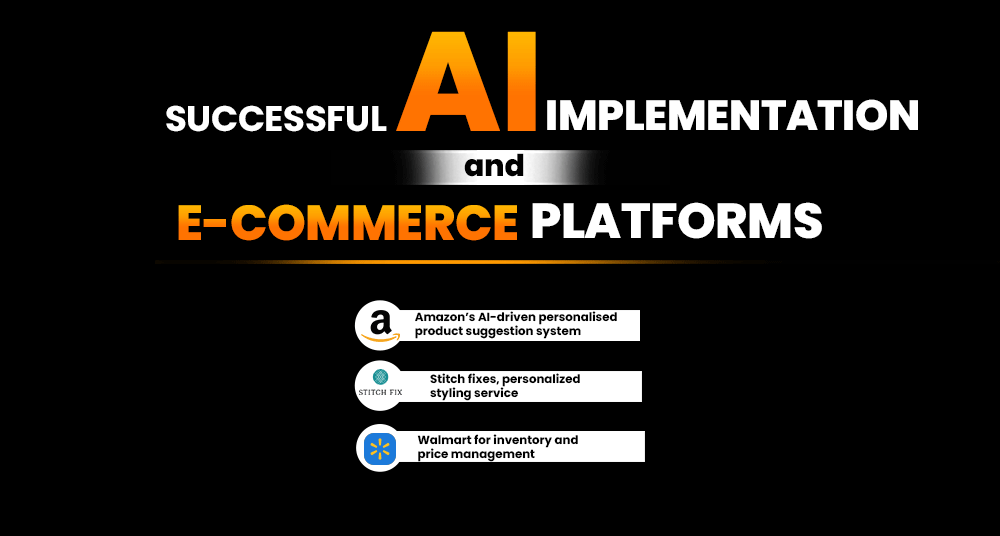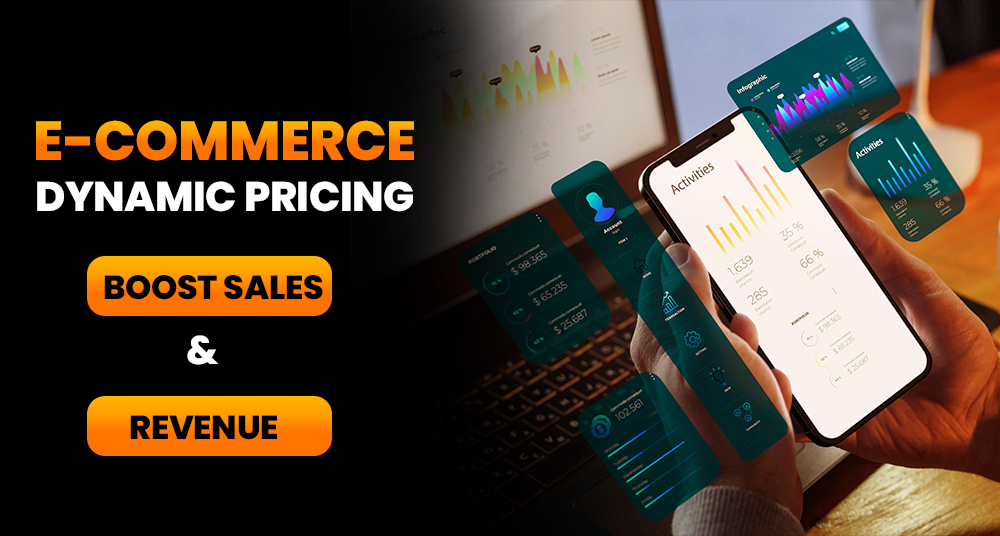E-commerce has completely changed how consumers and businesses shop and sell, and it has been nothing short of revolutionary. The development of pricing strategies has been essential to this change. Online retail pricing strategies have evolved over the years, moving from more rigid fixed models to more flexible, dynamic ones, all to keep up with the ever-shifting nature of digital commerce.
At first, online shopping followed the same model as brick-and-mortar stores with products, price status, and set amount. Part of the reason for this simplicity was the technology available then. Smarter pricing and tactics followed the development of the Internet and e-commerce platforms. Online stores were able to compete better And adapt to customer needs when promotional pricing discounts and variable pricing models started to appear.
However, implementing AI in any commerce has been a true Game Changer. Thanks to artificial intelligence. We can now use pricing models in which prices are not fixed but rather subject to change based on several market variables. Pricing in the artificial intelligence-driven model takes into account more than just market competition. It also incorporates an in-depth analysis of customer behavior, the interplay between supply and demand, and macroeconomic and meteorological variables.
Estimating the significance of e-commerce website development, companies, and app developers in contemporary business is impossible. They are the designers and developers of the online marketplace, allowing companies to use artificial intelligence to implement e-commerce dynamic pricing plans. This use of AI in e-commerce ass is in a new era in digital commerce by fundamentally changing the pricing strategies that are created and carried out rather than merely being a trend.
Definition and explanation of dynamic pricing
Dynamic pricing is a flexible pricing strategy in which prices are changed in real-time in response to current market demands. It is also referred to as demand pricing, search pricing, or time-based pricing. Dynamic pricing, as opposed to traditional pricing models, which have fixed p prices, enables businesses to alter prices in response to our idea of variables, including supply and demand, competitive pricing, customer behavior, the time of day, and even outside events.
How does e-commerce dynamic pricing work?
Here is how dynamic pricing works. Let us take a look at these below.
Demand and supply
the equilibrium between supply and demand is the primary determinant of dynamic pricing. When there is a high demand and low supply, prices rise; when the opposite is accurate, prices fall. Businesses can maximize profits by taking advantage of periods of high demand and moving inventory during slow periods by reducing prices.
Consumer behavior
dynamic pricing algorithms analyze consumer behavior and purchasing patterns. The data includes how often customers buy certain products, their spending habits, and their sensitivity to price changes. By understanding these parts, businesses can adjust prices to consumer expectations and willingness to pay.
Competitive Pricing
businesses usually adjust their prices in response to changes made by their competitors in a market with fierce competition. Dynamic pricing tools constantly monitor competitors’ prices and automatically adjust prices accordingly to stay competitive.
Time-based factors
certain goods or services might be more valuable at particular periods. For instance, the cost of hotel rooms or airline tickets may increase during popular travel times or specific locations.
External factors
dynamic pricing may also be impacted by outside factors like locals, the state of the economy, or the weather. For example, the cost of umbrellas may increase during the rainy season, and the price of specific commodities may change in response to economic changes.
How do AI algorithms work in pricing strategies?
The rise of AI has profoundly impacted how online retailers think about and execute pricing strategies. Large dataset analysis is how AI algorithms used in pricing strategies arrive at well-informed pricing decisions. The operation of these algorithms is broken down as follows.
- Data collection and analysis: AI algorithms begin by collecting large amounts of data from many sources, including past sales numbers, customer behavior, market trends, competitive pricing, and external factors like economic indicators. The next step is to examine the data for trends and patterns.
- Analytics for the future: by analyzing historical data, artificial intelligence can predict market trends and customer behavior. One use case is that it can help companies predict seasonal product demands and set prices appropriately.
- Price changes in real-time: AI-powered algorithms can make price changes in real-time. They maintain a close watch on the market and mechanically alter prices in reaction to supply, demand, and competition changes. This way, the prices are always adjusted to reflect the best possible market conditions.
- Individualization: AI can adjust prices according to customers, fast purchases, and current tastes. Customer satisfaction and loyalty can be enhanced through this personalization approach.
- Competitor monitoring: AI tools can track competitor pricing strategies, ensuring a business’s prices are always competitive. They can respond to price changes made by competitors almost instantaneously.
- Testing and learning: The algorithm can conduct A/B testing with different pricing strategies to determine what works best. They adjust their approach to pricing based on what they learn from these experiments.
Examples of AI in action in e-commerce dynamic pricing
- Dynamic pricing in online stores: many online stores use AI to make their prices change on the fly. Consider how frequently Amazon changes product prices and responds to market forces, supply and demand, rival pricing, and other factors.
- Personalized sales and deals: with the help of AI, online marketplaces can provide shoppers exclusive deals tailored to their individual preferences. The machine learning algorithm can analyze users’ behavior on a website and their past purchases to identify the kind of personalized ads that will interest them.
- Pricing for airline tickets: AI allows airlines to change ticket prices instantly. We will look at booking patterns, available seats, and competitive prices to determine the best price for every flight.
- Use of artificial intelligence in proper sharing search pricing: when demand is high, right-sharing companies like Lift and Uber fail to meet customer demand.
- Rates at hotels: yeah, algorithms help hotel booking platforms change room rates daily depending on local events, season, and occupancy rates.
- Services based on subscriptions: Artificial intelligence could help subscription-based software or streaming services like Netflix and determine user consumption patterns to determine subscription models and pricing tiers.
The necessary for e-commerce website development companies to integrate AI
With the digital marketplace changing rapidly, e-commerce website development companies using artificial intelligence have gone from an excellent product to a basic need. Here are the key reasons why integration is crucial:
- Improving customer service: by starting users, preferences, purchases, and browsing patterns, AI can tailor users, online shopping experience. Targeted promotions, customized content, and personalized product recommendations significantly increase user satisfaction and engagement.
- Effective inventory management: businesses can manage their inventory more effectively by using AI algorithms, which can predict product demand with noteworthy accuracy. This predictive capability reduces the risk of overstocking or stockouts, ensuring optimal inventory levels.
- Dynamic pricing optimization: AI makes it possible to implement dynamic pricing, which is crucial in a Kothth market. AI-driven pricing techniques guarantee that prices are constantly in line with competition strategies, demand swings, and market trends.
- Chatbots and customer service-driven Chand can respond instantly to consumer inquiries around the clock, improving customer service. These boards can help with typical problems, direct visitors through the website, and even help with purchasing.
- Data-driven insights for decision-making: AI tools analyze vast amounts of data to provide actionable insights. Marketing, campaigns, and product development adjust to areas of business strategy that can benefit from these insights.
- Security and fraud. Detection algorithms are very good at spotting fraudulent activity and boosting e-commerce platforms’ security. They can spot trends and possible security lapses safeguarding the company and its client.
How is e-commerce app development evolving with AI-driven pricing models?
Businesses’ pricing and customer interaction approaches have evolved due to the incorporation of AI-driven pricing models into e-commerce app development. This integration is altering E-commerce in several significant ways:
Real-time price optimization
AI-driven pricing models in e-commerce applications allow real-time price modifications in response to various variables, including user behavior, rival pricing, and market demand. This implies that prices can be adjusted dynamically to match the state of the market guarantee, guarantee, profitability, and competitiveness.
Personalized pricing strategies
to provide customized pricing, an AI algorithm scans and examines specific user data, including past purchases, browsing, history, and search patterns, to improve user experience and encourage customer loyalty. This could entail exclusive offers, loyalty, rewards, or special discounts to cater to individual preferences.
Demand forecasting with predictive analytics
AI in e-commerce apps can forecast future trends and consumer demands for goods and services. With the help of this predictive capability, businesses can proactively modify their pricing strategies to take advantage of periods of peak demand and account for slow ones.
Improved user experience through suggestions
AI-powered apps can offer intelligence-tailored product recommendations. Artificial intelligence can recommend products more likely to be of interest by examining how a user interacts with the app. This could raise the average order value.
Automated competitive pricing analysis
AI systems can automatically modify prices to remain competitive by continuously observing competitors’ costs. This guarantees the company will continue to draw in price-conscious clients without requiring continuous manual supervision.
Personalized sales and discounts
AI powers personalized sales and discounts triggered by various user engagement metrics app, usage, duration, card value, and other variables. This has a dual purpose: increasing sales and facilitating efficient inventory clearance.
Better inventory management
By coordinating pricing tactics with stock levels and AI-driven pricing models, improve inventory management. It is possible to alter prices to stimulate sales when high stock levels and vice versa.
Advanced consumer segmentation for price targeting
AI enables precise consumer segmentation—Maximise revenue potential from different segments by targeting various customer groups with different pricing strategies.
Better analytics and reporting
with the help of AI, companies can get a better picture of how their pricing strategies are doing and use that information to inform data-driven decisions about future pricing strategies.
Flexibility and scalability
AI-powered pricing models can easily handle more data and transactions as a business expands. The app’s scalability guarantees it will stay solid and responsive even as the business grows.
Case studies of successful AI implementation and e-commerce platforms
Revolutionary shifts in company, operation operations, and customer interactions have been brought about by using AI in online retail. Several prominent case studies demonstrating the effective use of AI in e-commerce platforms are given below:

Amazon’s AI-driven personalised product suggestion system
Amazon, a pioneer in AI implementation, uses machine learning algorithms to power its recommendation engine. The AI system analyses customer data, including past purchases, items in the shopping cart, items rated and liked, and what other customers have viewed and purchased. This personalized recommendation system accounts for a significant percentage of Amazon sales, showcasing the power of AI in enhancing Customer experience and boosting sales.
Stitch fixes, personalized styling service
St fixes and online personal styling services leverage AI to offer personalized services, including selections, to its customers. The platform uses AI algorithms to process clients, preferences, sizes, and feedback, which the stylist then uses to select customer items. This AI-assisted approach has led to high consumer satisfaction rates and repeat business, demonstrating AI’s role in providing customized shopping experiences.
Walmart for inventory and price management
Walmart uses AI to optimize inventory management and dynamic pricing across its vast network of stores and online platforms. AI algorithms analyze data, predict demand patterns, and adjust real-time pricing based on inventory levels and competitor pricing. This has resulted in more efficient inventory management, reduced waste, and improved profitability.
Other useful article:-E-commerce SEO: Actionable Tips for Driving More Traffic To the Website
Conclusion
Integrating artificial intelligence into e-commerce pricing models has marked a significant shift in how businesses approach pricing strategy. AI’s ability to analyze vast amounts of data in real time has enabled dynamic pricing. This flexible strategy adjusts prices based on market demand, consumer behavior, and other relevant factors. This evolution from static to dynamic pricing models has brought several key benefits. Predictive analysis in AI helps in efficient inventory management, reducing overstock and stock quotes. Integrating AI in pricing will also drive improvements in user interfaces, making e-commerce platforms more initiative and responsive to customer needs.
AI-driven dynamic pricing is not just a trend but a fundamental concept of the future of e-commerce. It offers businesses the tools to stay agile, customer-centric, and competitive in a changing digital marketplace. As we move forward, AI’s continued evolution and ethical application in pricing will be vital to harnessing its full potential, ensuring sustainable growth and customer satisfaction in the commerce sector.






What do you think?
It is nice to know your opinion. Leave a comment.